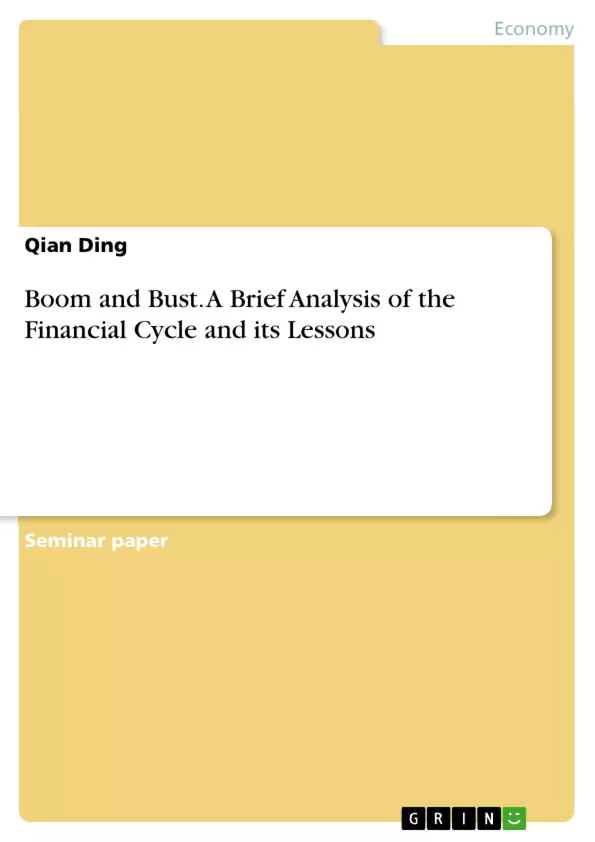This paper mainly analyzes the implications of the financial cycle and its interactions with the traditional business cycle. Using frequency-based filter and turning-point analysis to measure duration, amplitude and evolution of the financial cycle it is shown, that the results of both approaches for the financial cycle are similar and fit the actual dates well.
Further, it is found find that although financial and economic cycles are completely different, they are closely related.The financial cycle significantly amplifies fluctuations in the real economy. Other issues such like optimal monetary and fiscal policies and potential warning indicators are also analyzed.
Inhaltsverzeichnis (Table of Contents)
- Introduction
- Theory of the Financial Cycle
- Identification of the Financial Cycle: Measurement and Empirical Regularities
- Indicators and Approaches
- Basic Features and Characteristics
- Financial Cycle and Business Cycle: Interactions
- Identification of the Financial Cycle: Measurement and Empirical Regularities
- The Financial Cycle: Challenges and Implications
- Theoretical Derivation and Reflections
- Challenges, Warnings and Coping Strategies
- Conclusions
Zielsetzung und Themenschwerpunkte (Objectives and Key Themes)
This paper delves into the financial cycle and its complex interplay with the traditional business cycle. The author aims to analyze the implications of the financial cycle and its ability to amplify fluctuations in the real economy. The paper explores the methodologies of measuring the financial cycle, identifying its characteristics, and uncovering its close relationship with the business cycle. It examines how financial cycle peaks often signal a build-up of financial crisis and how sharp adjustments during these peaks can influence the length and severity of economic recessions.
- Financial cycle and its connection to business cycles
- Impact of financial cycle on economic fluctuations
- Identification and measurement of the financial cycle
- Financial crises and their relationship to financial cycle peaks
- Policy implications for managing the financial cycle
Zusammenfassung der Kapitel (Chapter Summaries)
The introduction sets the stage by discussing the limitations of traditional Keynesian and Real Business Cycle theories in explaining economic fluctuations. It highlights the emergence of the financial cycle as a critical factor and its impact on macroeconomic development. The paper then explores the theoretical framework of the financial cycle, examining its identification, measurement, and empirical regularities. This involves analyzing indicators and approaches to defining the financial cycle, as well as exploring its basic features and characteristics.
The following chapter delves into the intricate interactions between the financial cycle and the business cycle. It analyzes how the financial cycle can amplify fluctuations in the real economy, highlighting the potential for financial cycle peaks to signal financial crises and the subsequent impact on business recessions.
The paper concludes by exploring the theoretical implications of the financial cycle and examining the challenges, warnings, and coping strategies associated with managing it.
Schlüsselwörter (Keywords)
This paper focuses on the financial cycle, its relationship to the business cycle, and its potential impact on economic stability. Key themes include the identification and measurement of the financial cycle, its influence on economic fluctuations, the role of financial crises, and policy implications for managing financial cycle risks. The analysis also emphasizes the importance of understanding the connection between credit, asset prices, real interest rates, and monetary policy in shaping the financial cycle.
- Citation du texte
- Qian Ding (Auteur), 2019, Boom and Bust. A Brief Analysis of the Financial Cycle and its Lessons, Munich, GRIN Verlag, https://www.grin.com/document/512067



